
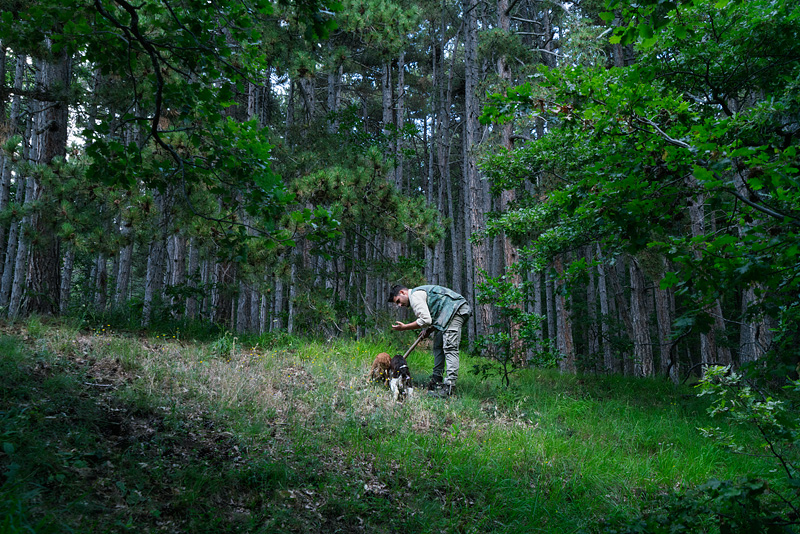
One of the excursions you can do if you visit Abruzzo, Italy, is to go truffle hunting. And I was game! It was among my “must do’s” from the moment I began planning our 10 night stay in this little-known region of central Italy.
Truffles are a highly esteemed food sought by gourmet chefs and discriminating palates everywhere. It is the fruiting body of a subterranean fungus, but neither looks or tastes like a mushroom. Truffles have a distinctive pungent and musky odor and an earthy, woodsy, and complex but delicate taste. A little goes a long way. Shavings of this pungent fungus is added to pasta, eggs, brushetta, meat dishes, fois gras, pate, honey, polenta and infused in olive oil. (Beware this is not the cheap “truffle olive oil” that is poorly flavored with synthetic chemicals.)
Truffles are not much to look at. In fact… rather unappetizing, don’t you think?

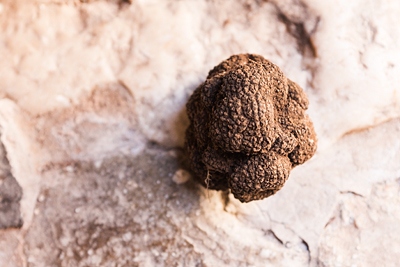
Truffles are crazy Expensive!
But this dark little mound is ounce for ounce the most expensive food you can buy, costing upwards of $2,000 per pound for the white truffle and $1200 per pound for the black truffle. This pricey little fungus grows beneath the soil under certain trees in Italy, France, Croatia, Slovenia, and Spain. In Italy, Abruzzo and neighboring Molise are the leading producers of truffles, and harvest 3 types: bianchetto (white truffle, Jan-Mar), scorzone (black truffle, summer) and tartufo biano (rarest truffle, Oct-Nov).
In Abruzzo alone, truffles net over 35 million euros a year, and prices continue to rise. Competition is fierce among the 6,000 truffle hunters here. Most keep their locations a secret as income potential is high. So it’s special indeed to have the opportunity to go along on a hunt.
My daughter and I arranged our truffle hunting excursion at the last minute through Sextantio Albergo Diffuso Hotel in Santo Stefano di Sessanio. Immediately, they scheduled us for a specific date and time.
A handsome young truffle hunter Gianluia and his sister picked us up at the hotel and drove us out of the village into a nearby forest. We could hear faint noises coming from the covered hatch. What was back there? When we stopped, two adorable dogs jumped out of the hatch–a Cocker Spaniel and Springer Spaniel. Eager and energetic, with tails wagging, they ran ahead and happily led us into the woods.

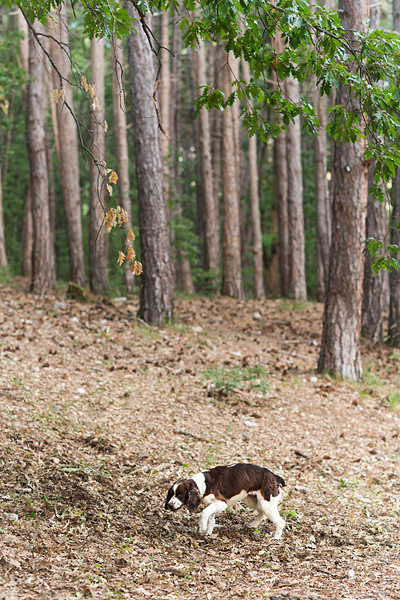
Truffle Hunting Dogs
In Italy, dogs are used for truffle hunting, not pigs which are typically used in France. Although pigs have a stronger innate ability to sniff out truffles, they were prohibited in Italy in 1985 because they can easily damage the truffle during digging, which affects quality and lowers the price. Plus, hunters have to wrestle the truffle away from the greedy pigs who are compelled to devour them, since the scent is similar to the pheromones in boar saliva.
Many Italian truffle hunters use Lagetto Renangnolo breed of dogs, as they have the sharpest sense of small. Trained dogs can cost up to 3,000 euros. But most farmers train their own puppies, using breeds that include Spaniels, Jack Russell terriers and Braccos.

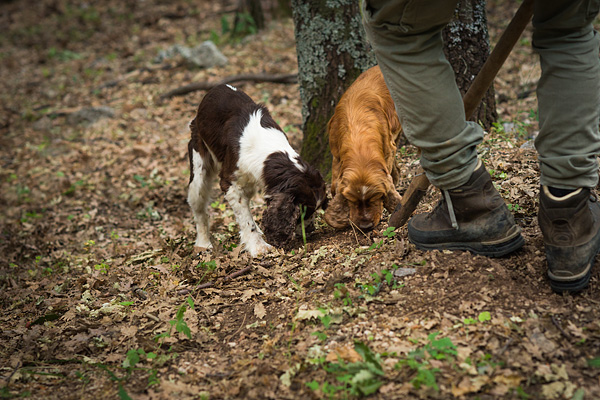
Gianluia has several breeds of dogs, and takes them out daily in the summer months. It was surprising to see how fast they worked–running with bent heads, sniffing the ground, and digging when they caught the scent of a truffle around the base of an oak tree. As soon as they started digging, Gianluia would rush over, and sometimes use his hoe-like tool called vanghella to help expose the soil so dogs could narrow in on the scent.

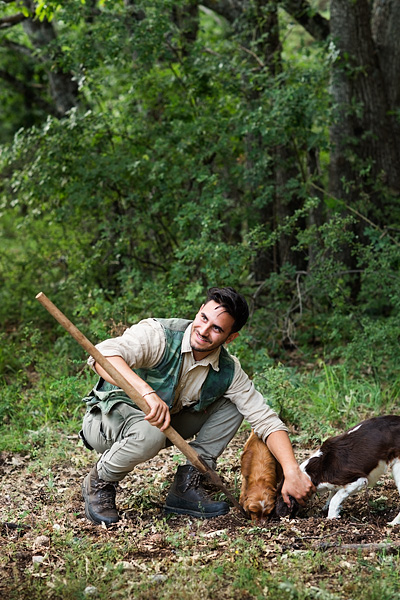
Finding the Truffles
Gianluia learned his foraging skills from his father, who still hunts. He goes truffle hunting most months of the year. Different varieties are harvested in 3 seasons, autumn, winter and summer. Truffles grow beneath oak trees and can be found 2-3 inches deep underground. They prosper in limestone soil and hot, dry climates. Wild boars are always a threat as they will sniff out the truffles first if they happen to wander into his secret hunting grounds.

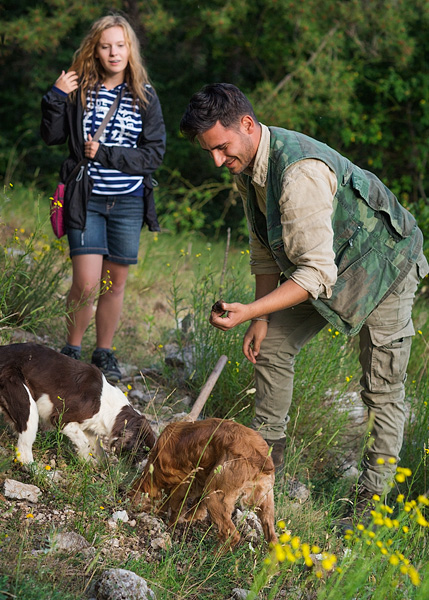
Each time dogs produced a truffle they were rewarded with a doggie treat. Good thing they prefer biscuits to truffles as the worth of the large ones are estimated at 150-200 euros each!

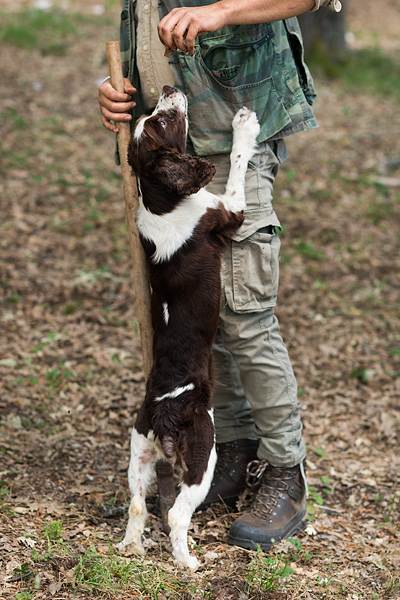
Smelling the Truffles…
Gianluia examined the quality of each truffle by smelling them.

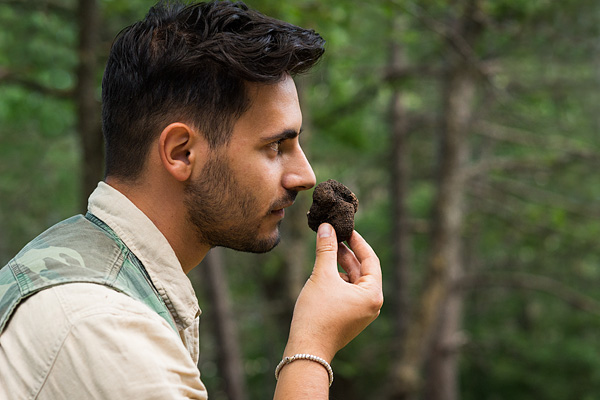
One particular type–triflea–had an especially off-putting scent. Its pungent odor reached epic proportions. He shook his head before casting it aside as no good.

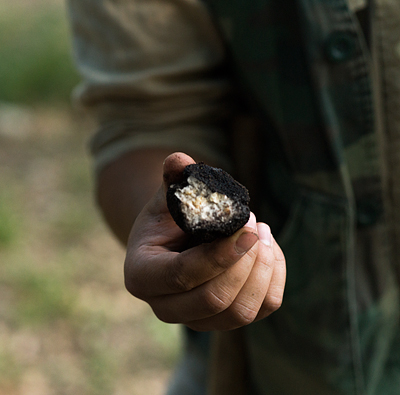
But most were of excellent quality, judged by the number he kept. Look at what he amassed in a mere hour!

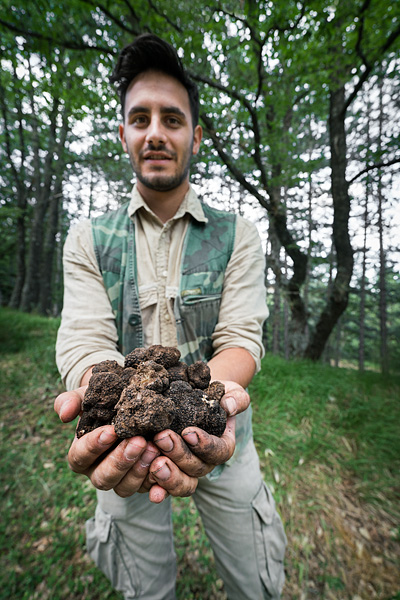
Eating the Truffles!
After the hunt we sat at a picnic table for a little tasting. Brushetta drizzled with shavings of truffle in olive oil was presented with glasses of red wine or juice. It was delicious! And so was the entire experience…

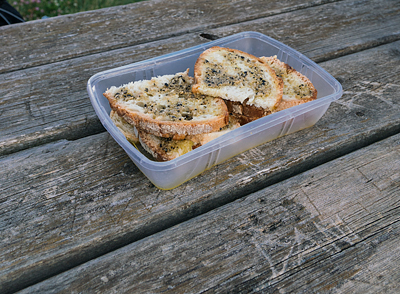

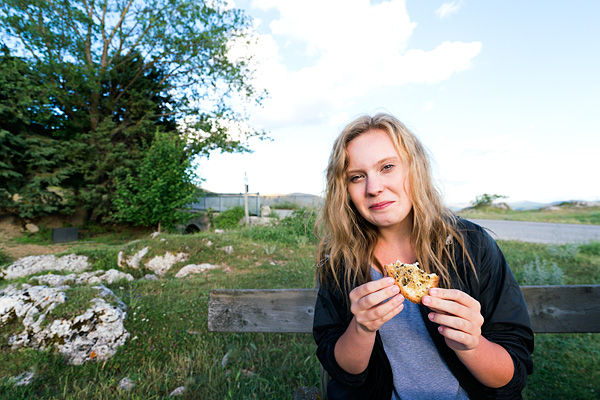
While savoring the flavors, they talked about how to prepare them.
First clean the truffle with a toothbrush (never soak in water), then grate it, and cook it in olive oil and garlic. This truffle oil can then be drizzle on hot pasta or brushetta.
And then they surprised us by giving us this large truffle as a gift! We adamantly declined, but they absolutely insisted. So VERY generous. Grazie mille!!

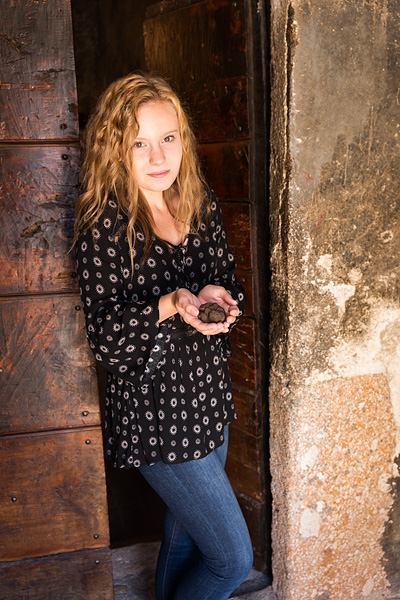
[booking_product_helper shortname=”santostefanomap”]
Choose a pic below to save for later. Pin it! on your Pinterest travel board.


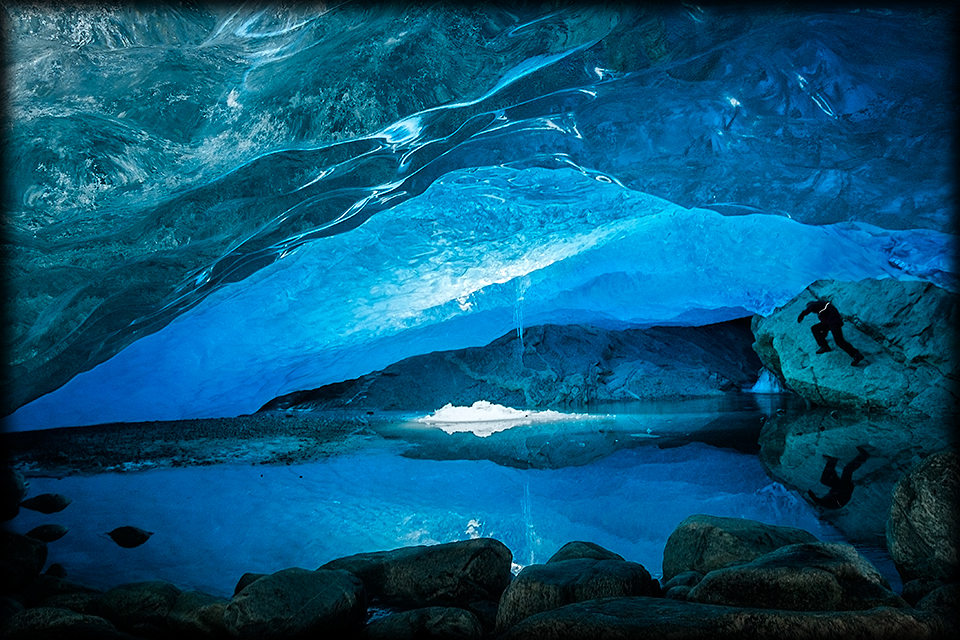
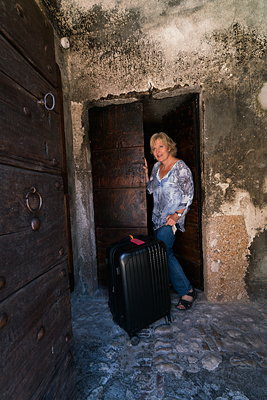
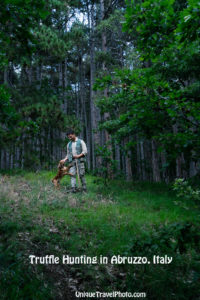
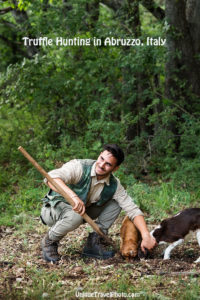
Damian Robinson - Truffle Hunter show you how to find truffles walking in the woods. ou can have a truly wonderful rural experience truffle hunting in Le Marche too, an Italian region to the east of Tuscany nestled between the Apennine Mountains and Adriatic coastline.